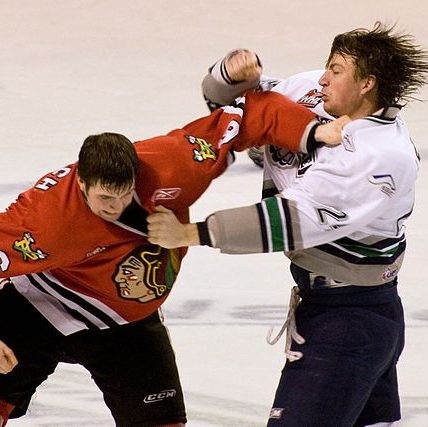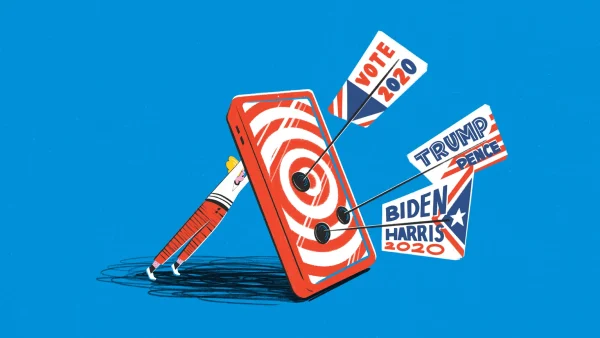Violence in sports has become too normalized in today’s society

More stories from Abby Busch

Hockey fights are a prime example of useless violence in sports.
If there was a video of someone getting brutally beaten up, I would hope most people would turn away. Watching that would be disturbing and upsetting. Why is it, then, that when we turn on a boxing match, some can’t look away? Fans get enthralled by the sport, even paying hundreds of dollars to watch and gamble on the outcome.
Violence in sports has become increasingly—and alarmingly—normalized.
A prime example of this is football. In the United States, the most popular sport to watch is football. Proof of this—beyond random statistics—is that we are able to watch it on TV four days a week: Thursday, Saturday, Sunday, and Monday. Personally, I am not a big fan. I mostly tolerate football watch parties for the snacks and to hang out with friends. However, as stated before, most do not agree with me and find football to be their favorite sport to watch.
To put it bluntly, most find football entertaining because of the brutality. High school football, while different from the professional league, accounts for more than 60% of concussions that occur in all high school sports. Brain injuries account for 65% to 95% of deaths caused by football. Facts like these are thrown around all the time, and people ignore them because of how often they are said; so often that it has become less disturbing and more normal. Simply put, football is favored because of the fans’ morbid fascination with watching men barrel into each other.
During the 2021 season, there were 20 deaths caused by playing football in the United States. Sure, 20 is a relatively low number, at least when considering nickels or pennies, but these are human lives.
Simply put, football is favored because of the fans’ morbid fascination of watching men barrel into each other.
Luckily, there are some rules that have been updated and changed in football, such as you can’t lead with your head into a tackle, the helmet has changed for better protection, and concussion protocols are being taken more seriously.
Hockey, on the other hand, actually allows fights in the NHL. Though the players get a five-minute penalty if they initiate the fight, there are still 0.3 fights every match. Fans even encourage the brawls. It is said that fighting lures the fans in and makes the game more entertaining for those watching. In other words, it is pointlessly risking their lives for someone else’s amusement.
The cons, in my opinion, outweigh the pro: entertainment. Cons of fighting in hockey include mental health problems, concussions, and even potential death. Fortunately, death is not common in the rink; there has only ever been one death that was caused by a direct injury on the ice in the NHL.
Similarly to football, concussions occur regularly in hockey. There is a 30% chance that a hockey player will attain a concussion while playing. Long term effects of concussions can be extremely serious and lasting. Issues with concentration, memory, severe headaches, and sometimes physical problems such as keeping one’s balance are all very real and very possible outcomes from one too many concussions. Repeated concussions could also lead to conditions like Alzheimer’s, Parkinson’s disease, and eventually dementia.
Football and hockey are two examples of the glorification of violence in today’s sports. Boxing, rugby, lacrosse, and soccer are also among the sports that have the possibility of being too brutal.
Rather than participating in the trend of ignoring these real health risks, realize that what you think is entertainment is actually vicious violence.

Abby Busch is a junior entering her first year on The Central Trend. She loves to write and is so excited that she has a chance to share her pieces with...





























































































